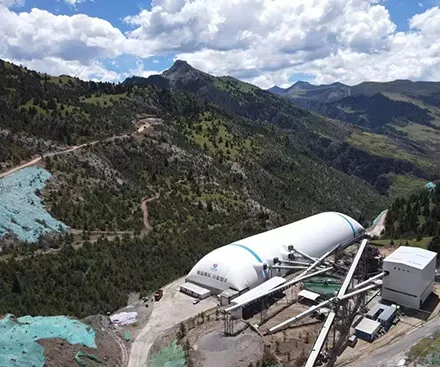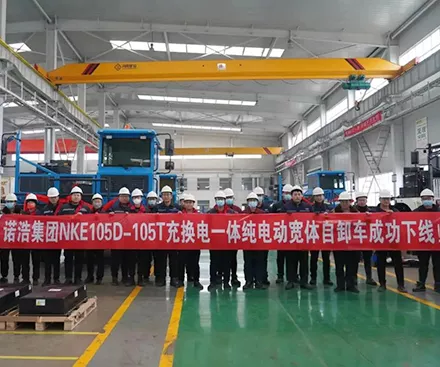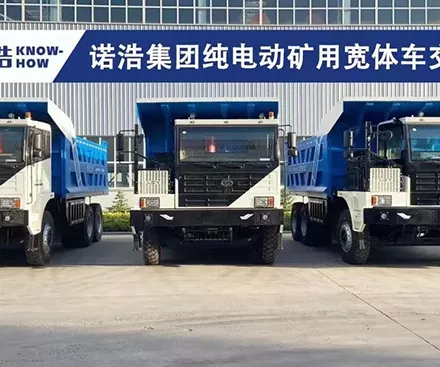Also referred to as front loaders, wheel loaders are robust machines extensively utilized for loading other equipment or materials using a bucket. Various types of wheel loaders are available, tailored to specific project requirements. Here's a comprehensive guide to understanding wheel loaders before acquiring one for your project.
Wheel loaders, also known as front-end loaders, front loaders, wheeled loaders, bucket loaders, scoop loaders, or skip loaders, are heavy equipment commonly found on construction sites and building projects. Utilizing an arm mechanism to raise and lower its bucket, and a bell crank to open and close said bucket, wheel loaders are versatile machines capable of lifting a wide range of materials including debris, gravel, soil, dirt, and pallets. Their mobility on roads is facilitated by wheels, without causing damage to asphalt or concrete surfaces. Additionally, wheel loaders can be equipped with various attachments to adapt to different project requirements, ensuring versatility across a range of tasks. Available in different sizes, wheel loaders cater to projects of all scales, with even compact loaders exhibiting significant power and capability.
Wheel loaders are powerful and durable machines commonly employed on construction sites to expedite various tasks. Equipped with an arm and bucket, they excel at hauling, scooping, and transporting large-scale materials across a site. In addition to construction sites, wheel loaders find utility in agricultural operations and landscaping projects.
These versatile machines can dig, haul, carry, and transport materials efficiently. They play crucial roles in road construction, site preparation, and post-project cleanup activities.
Wheel loaders are tailored for specific purposes, and when equipped with the right machine, tires, and attachments, Volvo CE’s offerings ensure exceptional performance and safety.
Wheel loaders designed for block handling excel at heavy lifting and transporting blocks, even on uneven, wet, and steep terrain.
Log handling applications demand high capacity, flexibility, and a wide range of attachments for cutting, hauling, and other tasks related to handling logs.
These loaders are engineered for maximum performance and durability in challenging environments. They possess the strength, stability, traction, and durability required to withstand hot, dusty conditions.
Specially crafted for waste and recycling applications, waste loaders can undertake various tasks such as collecting, transporting, and sorting waste. Often utilized in landfill sites, these machines can handle waste of any size.
Primarily found in steel mills, slag handling loaders are built to endure harsh conditions, including intense heat, dust, and toxic fumes. They offer heat-proofing and thermal protection for operators and machines.
Designed for maximum productivity, rehandling loaders efficiently transport large quantities of materials, minimizing loading cycles and saving time on projects.
These loaders deliver uninterrupted performance, working tirelessly all day long. Suitable for indoor and outdoor use, agriculture loaders can navigate farms in challenging weather and ground conditions, carrying various loads with ease.
When selecting a wheel loader, it's crucial to consider the nature of the job at hand. With a variety of sizes and attachments available, choosing the most suitable one will enhance project efficiency. The initial step in selecting any heavy equipment is to understand the specific requirements of the project and assess the project site conditions.
Wheel loaders are typically chosen based on factors such as the size of the project site, bucket capacity, and the reach of the loader's arm. Consulting with the manufacturer can also provide valuable insights into which type and size of equipment would maximize productivity and efficiency for the project.
Small/Compact Loaders: Popular among landscaping companies, these loaders are ideal for digging and moving materials. With an operating or workload range of 1 to 4.5 tons, they are well-suited for yard projects, particularly when equipped with attachments like forks and rakes.
Mid-Sized Loaders: Ranging from 5.5 to 6.5 tons operating or workload, mid-sized loaders are commonly used for moving larger and heavier materials. They are frequently seen on construction sites.
Large Loaders: These machines range from 7.5 to 18 tons operating or workload. Large loaders excel at loading trucks with gravel and are employed in more heavy-duty projects.
There are many attachments to choose from, but some might not be applicable to your project. It’s good to get familiar with these attachments in case you need them for future use with your wheel loaders.
Here are some of the most common attachments used in projects:
Buckets
Forks
Couplers
Lifting jibs
Rakes
Pushers
Shovels
Augers
Brooms
Stump grinders
Like any heavy machinery, heavy duty wheel loaders present inherent hazards, necessitating proper training and adherence to safety protocols for operators.
Before operating a wheel loader, ensure awareness of surroundings. Check for the presence of individuals near or around the machine, utilize all safety protocols, and maintain visibility of the loader for all personnel. Ensure the backup signal is functioning correctly. Always inspect below for individuals before lifting or moving the arm and bucket.
When lifting heavy materials at height for dumping, the machine's center of gravity adjusts, potentially destabilizing it. Transport loads as close to the ground as possible and consider placing a loaded bucket below the tractor for added stability. Never exceed the maximum weight capacity to prevent tipping. When navigating angled terrain, such as steep hills, travel in reverse when descending to maintain stable center of gravity.
While wheel loaders can operate on uneven ground, stability may be compromised on steep inclines or hazardous terrain (e.g., loose gravel, soft soil). Consider carrying only half of the loader's capacity if the terrain feels precarious and operate the wheel loader cautiously. Always wear a securely fastened safety belt before operating and refrain from rushing when traversing potentially dangerous ground to avoid rollover accidents. Ensure the loader is stable to prevent accidents.
Before purchasing a wheel loader, it's essential to grasp these fundamental concepts. When considering a wheel loader purchase, explore various manufacturers and models. Most manufacturers offer compact, medium, and large wheel loaders.
Seeking suggestions or a second opinion from your potential manufacturer can ensure that the chosen wheel loader is suitable for your project requirements.

Jul. 23, 2022
View More
Jun. 15, 2022
View More
Jun. 01, 2022
View More